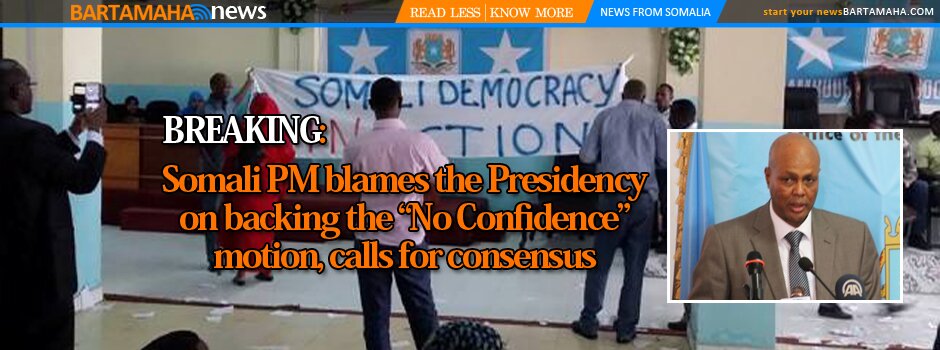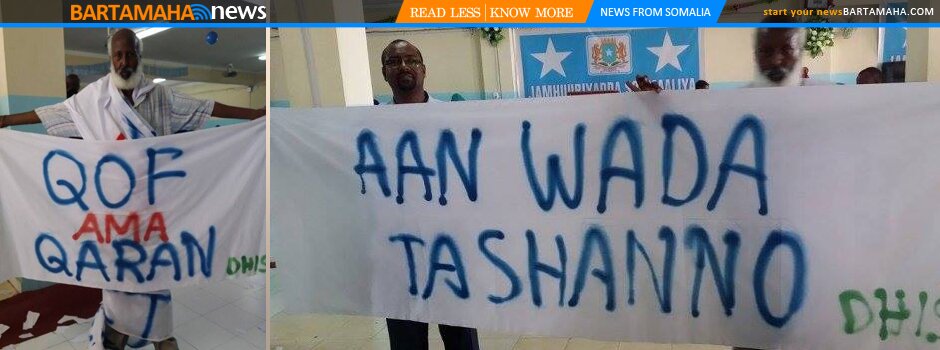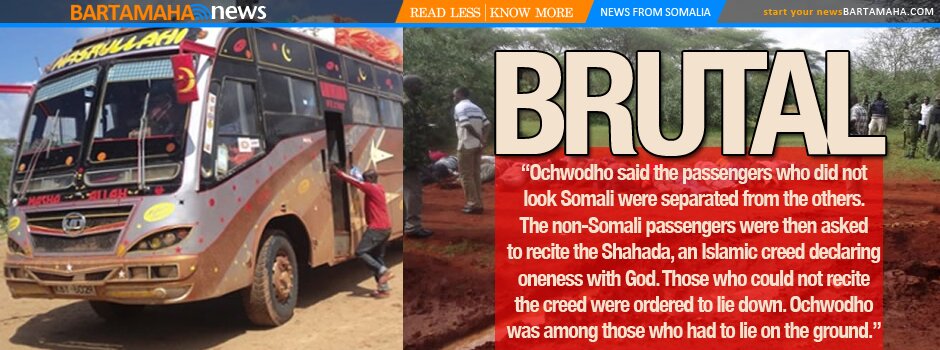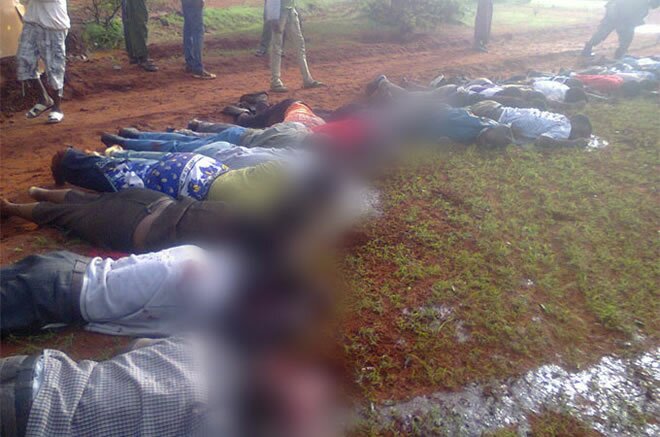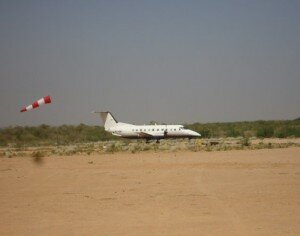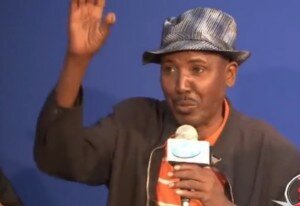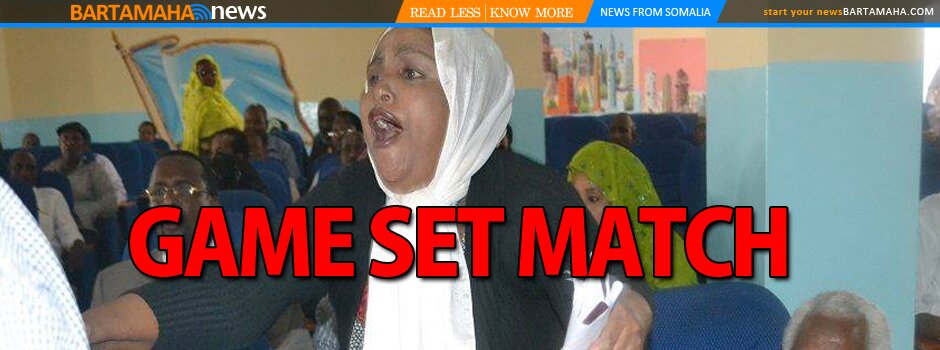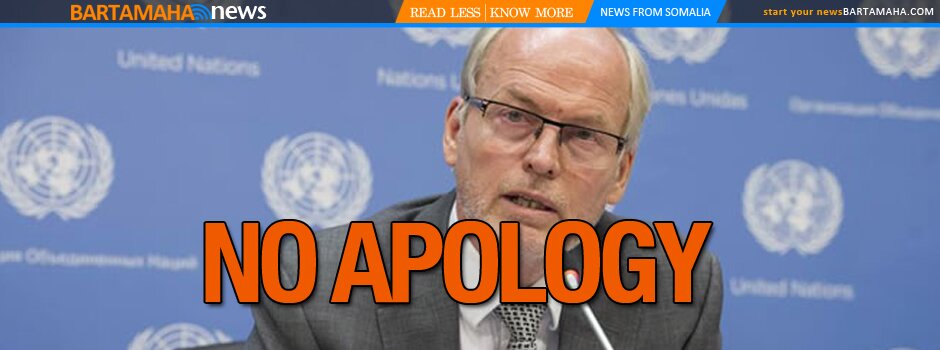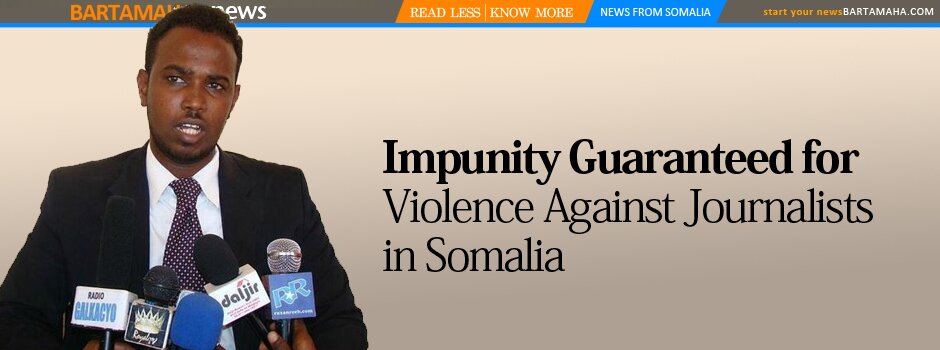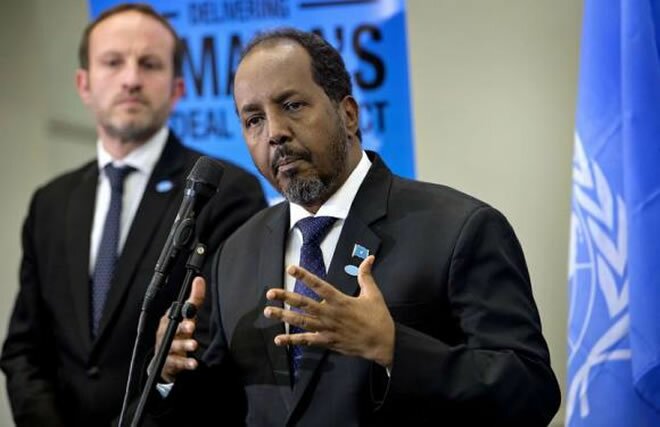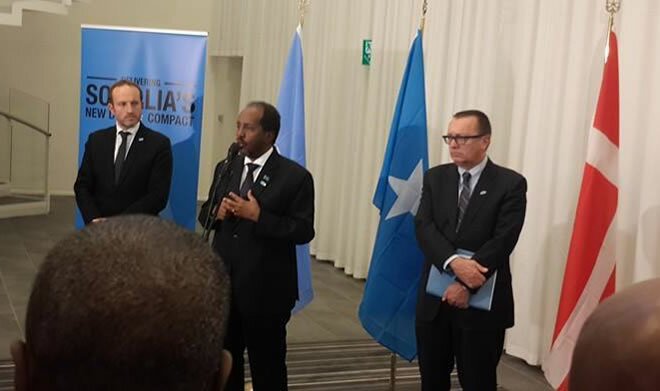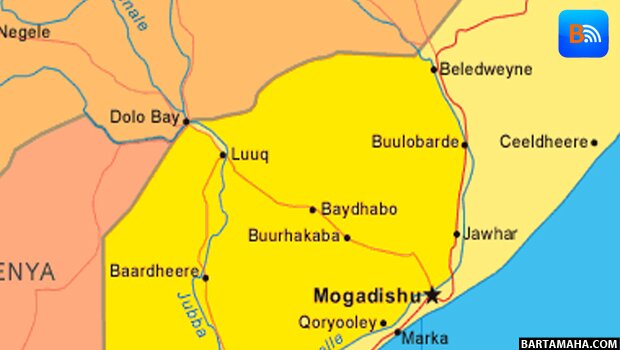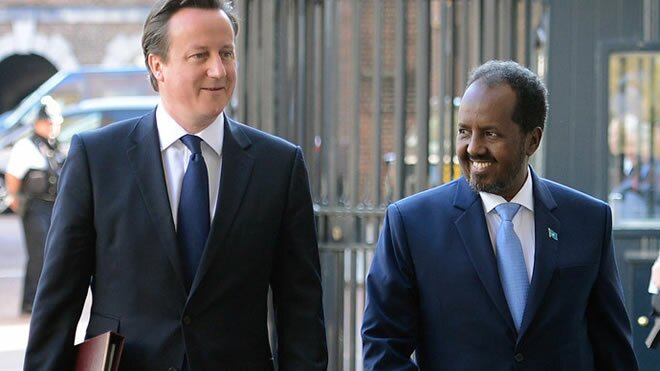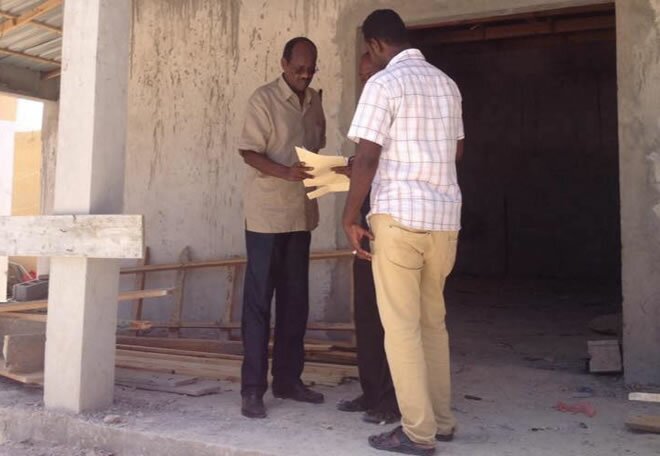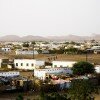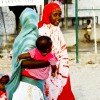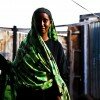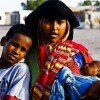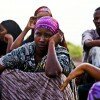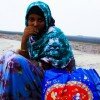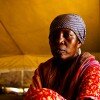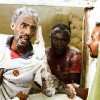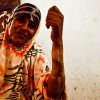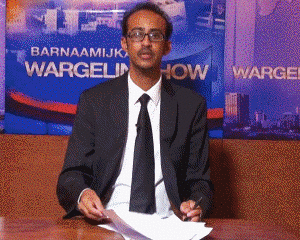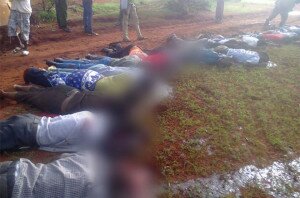To whom it may concern Kharaz Camp, south Yemen
 By Hugh Macleod and Annasofie Flamand, Kharaz Camp, south Yemen
By Hugh Macleod and Annasofie Flamand, Kharaz Camp, south Yemen
It has taken Hawo Yousef a long time to save up the money for the letter.
Here on a dusty, scalding hot plateau in south Yemen, an old military base turned refugee camp for her and 17,000 other Somalis, $15 is a month’s work, if you can find it.
Hawo steps inside the concrete block room, its shadows dimming the bright colours of her headscarf, into the breathless air, hot as a furnace by midday.
This is where 29-year-old Jamal Mohammed, the letter writer, makes his business. Jamal has found a purpose and a profit putting pen to paper and giving voice to the experiences of those who have lost homes and families.
Since 2005, the UN agency for refugees, UNHCR, has been receiving between 100 and 150 letters a month from the Somali refugees, nearly 10,000 so far, each of them explaining how and why its author ended up in Kharaz and asking the world for help.
The grammar might be clunky, the expressions often quaint, but the form of the words stands in stark, appalling contrast to the violence, loss and degradation of the human experiences they convey.
In meticulous, awkward black letters, Jamal writes out slowly the stories of Somalia’s unimaginable tragedy.
‘I passed a difficult life’
“To Whom It May Concern.” Jamal begins the letter as he does all others.
Hawo explains how in 2007 militia men, “the enemy of civil war” as she calls them, broke into her home.
“They hit [my husband] badly and they wanted to rape me in front of him. He tried to protect me, but unfortunately they killed him with a big knife. I was seven months pregnant at that time. And I decided to go out of the country because of unsafety.”
Like thousands of other Somali mothers, Hawo was forced into a heartbreaking choice: which of her children to take with her on the perilous journey to Yemen and which to leave behind in Somalia. She could not afford to bring all of them.
She decided her two youngest daughters, Aisha, five, and Fadma, three, must travel with her, and that Mariam, her eldest daughter at 13, would stay behind with Hawo’s parents in Mogadishu.
“During my trip on the sea I passed a difficult life.” Jamal has begun a new paragraph.
The crossing from Bossaso, the pirate port on Somalia’s northern coast, to Yemen is supposed to take a day or two, with passengers allowed to carry one small plastic bag each, no food and a single bottle of water.
Somalia’s ‘season of mixed migration’ recently began again.
But if the UN’s terminology for terrified Somalis fleeing hell on earth sounds soothing, the reality is anything but.
At least 13 African refugees drowned in September after their stranded skiff capsized in the Gulf of Aden as an American warship tried to deliver it food and water. The 61 who were rescued were taken back towards the Somali coast.
In recent years, the sea between the Horn of Africa and Yemen has been one of the busiest and most deadly refugee routes in the world, according to the UN’s refugee agency UNHCR.
So far this year over 32,000 African refugees and migrants from Somalia and Ethiopia have made the perilous crossing to Yemen, escaping war and persecution.
With her two small daughters slumped over her lap, Hawo sat cramped in the long thin skiff, designed for two dozen people, now packed with nearly 50.
Her children were asleep by the time the engine spluttered and stopped, its petrol run dry.
“The boat was swinging around and there were sharks swimming around the boat,” Hawo recalls in an interview. “People started to quarrel because they were scared. And the smugglers started to beat the people and throw them into the sea.”
Aisha and Fadma had woken and were crying; thirsty, hungry and sensing the fear of the adults around them. The smugglers lost their nerve.
“I couldn’t make my children be quiet and the smugglers warned me to silence them, but I couldn’t,” remembers Hawo. “Finally they ripped my children away from me and threw them into the sea.”
Jamal looks up briefly from the letter as Hawo dictates.
“I had no ability to take back my kids from them. And I saw my kids dying on the sea. That compelled me to be mad.”
After 13 days and nights adrift in the ocean, help finally arrived, another boat with petrol and directions to the Yemeni coast. Forced into the water by smugglers too scared to land them on the shore, many of those who had survived the journey to Yemen drowned just metres from the shore.
Nor did the baby that Hawo had carried in her through seven months of Somalia and seventeen days of escape make it to new life in Yemen, dying in Kharaz camp after a premature birth, leaving Hawo a childless mother of four.
“Now I heal that wound. But sometimes I remember and really I am in very bad situation with no choice what to do. I have no relatives here and I hope you,” Jammal starts another line, signalling the end of the letter, “consider my situation. Thank. Yours. Hawo tent no:- 69pt”
‘A final massive war’
Somalia is and remains the world’s original failed state.
Since rival clans overthrew the government in 1991, civil war has consumed the country and its people. Out of the anarchy of 15 years of warlords grew a religiously motivated group, al-Shabab, whose control now extends over large swaths of southern Somalia and most of its capital.
Mogadishu today is a graveyard; its streets abandoned to the wild gunfire of fighters, as al-Shabab and other Islamists fight to over-run the few remaining streets that government troops control, protected by a contingent of African peacekeepers with no peace to keep.
On August 24, 33 people, including four members of Somalia’s parliament, died after two al-Shabab fighters blew themselves up in a hotel in Mogadishu, the start of what the group called “a final, massive war” to take full control of the capital.
Thousands have abandoned the city to live in shelters around its outskirts, just some of the 1.7 million people internally displaced by the war.
And if bullets and knives do not get them, hunger, thirst and disease probably will, with humanitarian agencies no longer able to reach the crumbling city. In January, the World Food Programme suspended operations in southern Somalia after al-Shabab threatened their staff.
Up to one million people have died from war, disease and famine in Somalia since 1991.
For those who can, escape is the only hope. In the first half of this year alone the UNHCR estimates that 200,000 Somalis have fled their homes.
‘No shining future’
 |
“To Whom It May Concern.” Mumina Burale sits across from Jamal and dictates her letter.
“I am the mother of a family consisting of seven persons. None of the family has a job so I am alone who covers all family’s needs [...] In Yemen although we found some peace, but life is very difficult. No shining future for our children.”
Nothing shines in Kharaz, except sweat on bodies and the sun on cheap metal used by families to build walls around their patch of bare earth and broken stones.
Kharaz refugee camp is divided into 59 blocks each with 25 shelters. Every family gets their shelter and a latrine sunk into the ground. New arrivals enjoy five days of cooked food, square meals before it is on to the monthly rations – 9kg of wheat flour per person, 4.5kg of pulses, 1.8kg of rice, some oil to cook it in and some sugar to wash down the tea.
A diet of bread and beans, life support, but no more, for some, for a lifetime.
Six hundred families wait in tents to be moved into shelters; but with only 250 new shelters to move into and no cash to build more, many will not even have four walls to call home.
The frustration of 12 years living in Kharaz begins to show through in Mumina’s words.
“I am really fed up of such a life and do not know what to do or where to go. I am really very disappointed, so you are the only to whom I can complain and inform my life situation. So that, I write to you looking for your help. Please, I ask you to look at me with kind eyes and help me.”
‘What to do now’
Resettlement, a new life in the US or Europe, is what the voices from the letters wish for and what most will never enjoy.
Adnan Ali woke up in a garbage dump after the “enemy of civil war” attacked his home, tied him up, killed his two brothers and gang raped his sister, before killing her as well.
“What to do now,” reads his letter, Jamal’s scratchy writing sloping off to one side as if exhausted. “My wife and some of my children are begging in Aden because of that I couldn’t feed them. And the other are washing cars at the streets their future lost. Consequently I am kindly asking to give me your cooperation in helping me kindly to return the future of my children.”
Jamal puts down his pen. His hand tired from all the writing. Always busy. He folds Adnan’s letter and throws it on the pile with those from Hawo, Mumina and all the others, waiting to be delivered to whom it may concern.
___
Al Jazeera
Comments
comments
 Calendar
Calendar





